Yunlong Wang
TACFN: Transformer-based Adaptive Cross-modal Fusion Network for Multimodal Emotion Recognition
May 10, 2025Abstract:The fusion technique is the key to the multimodal emotion recognition task. Recently, cross-modal attention-based fusion methods have demonstrated high performance and strong robustness. However, cross-modal attention suffers from redundant features and does not capture complementary features well. We find that it is not necessary to use the entire information of one modality to reinforce the other during cross-modal interaction, and the features that can reinforce a modality may contain only a part of it. To this end, we design an innovative Transformer-based Adaptive Cross-modal Fusion Network (TACFN). Specifically, for the redundant features, we make one modality perform intra-modal feature selection through a self-attention mechanism, so that the selected features can adaptively and efficiently interact with another modality. To better capture the complementary information between the modalities, we obtain the fused weight vector by splicing and use the weight vector to achieve feature reinforcement of the modalities. We apply TCAFN to the RAVDESS and IEMOCAP datasets. For fair comparison, we use the same unimodal representations to validate the effectiveness of the proposed fusion method. The experimental results show that TACFN brings a significant performance improvement compared to other methods and reaches the state-of-the-art. All code and models could be accessed from https://github.com/shuzihuaiyu/TACFN.
Embodied Crowd Counting
Mar 11, 2025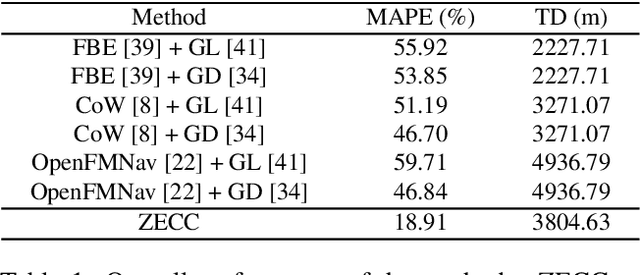
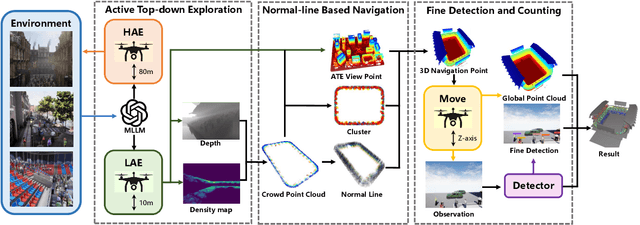

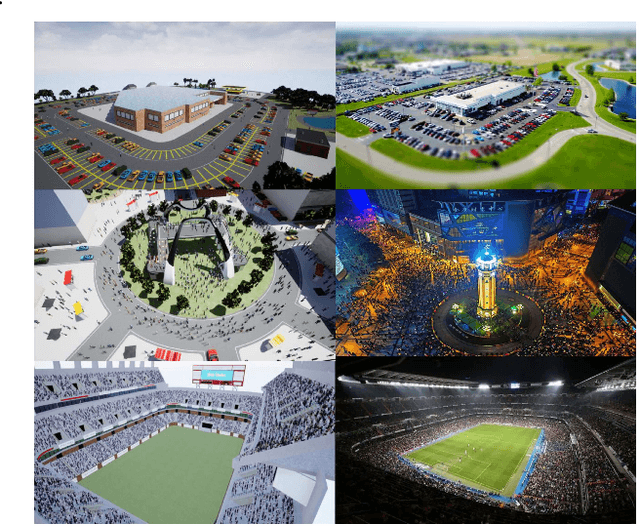
Abstract:Occlusion is one of the fundamental challenges in crowd counting. In the community, various data-driven approaches have been developed to address this issue, yet their effectiveness is limited. This is mainly because most existing crowd counting datasets on which the methods are trained are based on passive cameras, restricting their ability to fully sense the environment. Recently, embodied navigation methods have shown significant potential in precise object detection in interactive scenes. These methods incorporate active camera settings, holding promise in addressing the fundamental issues in crowd counting. However, most existing methods are designed for indoor navigation, showing unknown performance in analyzing complex object distribution in large scale scenes, such as crowds. Besides, most existing embodied navigation datasets are indoor scenes with limited scale and object quantity, preventing them from being introduced into dense crowd analysis. Based on this, a novel task, Embodied Crowd Counting (ECC), is proposed. We first build up an interactive simulator, Embodied Crowd Counting Dataset (ECCD), which enables large scale scenes and large object quantity. A prior probability distribution that approximates realistic crowd distribution is introduced to generate crowds. Then, a zero-shot navigation method (ZECC) is proposed. This method contains a MLLM driven coarse-to-fine navigation mechanism, enabling active Z-axis exploration, and a normal-line-based crowd distribution analysis method for fine counting. Experimental results against baselines show that the proposed method achieves the best trade-off between counting accuracy and navigation cost.
LEGO-Motion: Learning-Enhanced Grids with Occupancy Instance Modeling for Class-Agnostic Motion Prediction
Mar 10, 2025



Abstract:Accurate and reliable spatial and motion information plays a pivotal role in autonomous driving systems. However, object-level perception models struggle with handling open scenario categories and lack precise intrinsic geometry. On the other hand, occupancy-based class-agnostic methods excel in representing scenes but fail to ensure physics consistency and ignore the importance of interactions between traffic participants, hindering the model's ability to learn accurate and reliable motion. In this paper, we introduce a novel occupancy-instance modeling framework for class-agnostic motion prediction tasks, named LEGO-Motion, which incorporates instance features into Bird's Eye View (BEV) space. Our model comprises (1) a BEV encoder, (2) an Interaction-Augmented Instance Encoder, and (3) an Instance-Enhanced BEV Encoder, improving both interaction relationships and physics consistency within the model, thereby ensuring a more accurate and robust understanding of the environment. Extensive experiments on the nuScenes dataset demonstrate that our method achieves state-of-the-art performance, outperforming existing approaches. Furthermore, the effectiveness of our framework is validated on the advanced FMCW LiDAR benchmark, showcasing its practical applicability and generalization capabilities. The code will be made publicly available to facilitate further research.
SeCap: Self-Calibrating and Adaptive Prompts for Cross-view Person Re-Identification in Aerial-Ground Networks
Mar 10, 2025Abstract:When discussing the Aerial-Ground Person Re-identification (AGPReID) task, we face the main challenge of the significant appearance variations caused by different viewpoints, making identity matching difficult. To address this issue, previous methods attempt to reduce the differences between viewpoints by critical attributes and decoupling the viewpoints. While these methods can mitigate viewpoint differences to some extent, they still face two main issues: (1) difficulty in handling viewpoint diversity and (2) neglect of the contribution of local features. To effectively address these challenges, we design and implement the Self-Calibrating and Adaptive Prompt (SeCap) method for the AGPReID task. The core of this framework relies on the Prompt Re-calibration Module (PRM), which adaptively re-calibrates prompts based on the input. Combined with the Local Feature Refinement Module (LFRM), SeCap can extract view-invariant features from local features for AGPReID. Meanwhile, given the current scarcity of datasets in the AGPReID field, we further contribute two real-world Large-scale Aerial-Ground Person Re-Identification datasets, LAGPeR and G2APS-ReID. The former is collected and annotated by us independently, covering $4,231$ unique identities and containing $63,841$ high-quality images; the latter is reconstructed from the person search dataset G2APS. Through extensive experiments on AGPReID datasets, we demonstrate that SeCap is a feasible and effective solution for the AGPReID task. The datasets and source code available on https://github.com/wangshining681/SeCap-AGPReID.
PriorMotion: Generative Class-Agnostic Motion Prediction with Raster-Vector Motion Field Priors
Dec 05, 2024Abstract:Reliable perception of spatial and motion information is crucial for safe autonomous navigation. Traditional approaches typically fall into two categories: object-centric and class-agnostic methods. While object-centric methods often struggle with missed detections, leading to inaccuracies in motion prediction, many class-agnostic methods focus heavily on encoder design, often overlooking important priors like rigidity and temporal consistency, leading to suboptimal performance, particularly with sparse LiDAR data at distant region. To address these issues, we propose $\textbf{PriorMotion}$, a generative framework that extracts rasterized and vectorized scene representations to model spatio-temporal priors. Our model comprises a BEV encoder, an Raster-Vector prior Encoder, and a Spatio-Temporal prior Generator, improving both spatial and temporal consistency in motion prediction. Additionally, we introduce a standardized evaluation protocol for class-agnostic motion prediction. Experiments on the nuScenes dataset show that PriorMotion achieves state-of-the-art performance, with further validation on advanced FMCW LiDAR confirming its robustness.
Revealing Key Details to See Differences: A Novel Prototypical Perspective for Skeleton-based Action Recognition
Nov 28, 2024Abstract:In skeleton-based action recognition, a key challenge is distinguishing between actions with similar trajectories of joints due to the lack of image-level details in skeletal representations. Recognizing that the differentiation of similar actions relies on subtle motion details in specific body parts, we direct our approach to focus on the fine-grained motion of local skeleton components. To this end, we introduce ProtoGCN, a Graph Convolutional Network (GCN)-based model that breaks down the dynamics of entire skeleton sequences into a combination of learnable prototypes representing core motion patterns of action units. By contrasting the reconstruction of prototypes, ProtoGCN can effectively identify and enhance the discriminative representation of similar actions. Without bells and whistles, ProtoGCN achieves state-of-the-art performance on multiple benchmark datasets, including NTU RGB+D, NTU RGB+D 120, Kinetics-Skeleton, and FineGYM, which demonstrates the effectiveness of the proposed method. The code is available at https://github.com/firework8/ProtoGCN.
High Definition Map Mapping and Update: A General Overview and Future Directions
Sep 15, 2024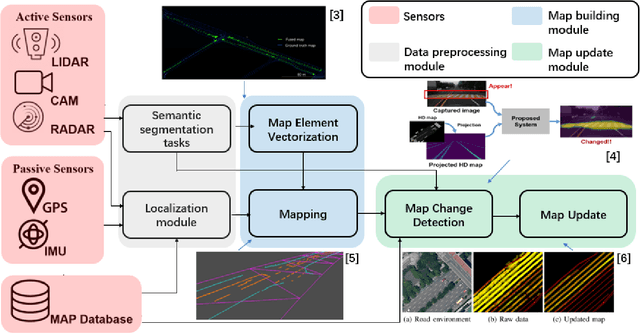
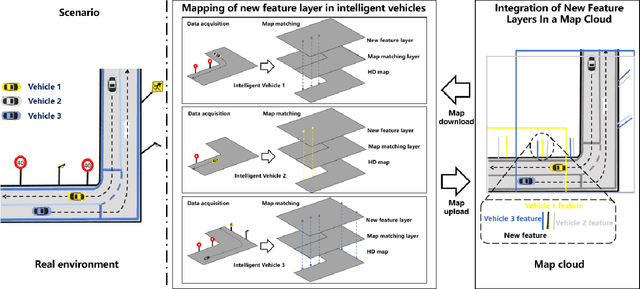
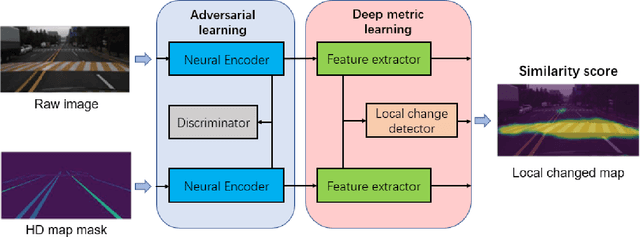

Abstract:Along with the rapid growth of autonomous vehicles (AVs), more and more demands are required for environment perception technology. Among others, HD mapping has become one of the more prominent roles in helping the vehicle realize essential tasks such as localization and path planning. While increasing research efforts have been directed toward HD Map development. However, a comprehensive overview of the overall HD map mapping and update framework is still lacking. This article introduces the development and current state of the algorithm involved in creating HD map mapping and its maintenance. As part of this study, the primary data preprocessing approach of processing raw data to information ready to feed for mapping and update purposes, semantic segmentation, and localization are also briefly reviewed. Moreover, the map taxonomy, ontology, and quality assessment are extensively discussed, the map data's general representation method is presented, and the mapping algorithm ranging from SLAM to transformers learning-based approaches are also discussed. The development of the HD map update algorithm, from change detection to the update methods, is also presented. Finally, the authors discuss possible future developments and the remaining challenges in HD map mapping and update technology. This paper simultaneously serves as a position paper and tutorial to those new to HD map mapping and update domains.
6-DoF Grasp Detection in Clutter with Enhanced Receptive Field and Graspable Balance Sampling
Jul 01, 2024



Abstract:6-DoF grasp detection of small-scale grasps is crucial for robots to perform specific tasks. This paper focuses on enhancing the recognition capability of small-scale grasping, aiming to improve the overall accuracy of grasping prediction results and the generalization ability of the network. We propose an enhanced receptive field method that includes a multi-radii cylinder grouping module and a passive attention module. This method enhances the receptive field area within the graspable space and strengthens the learning of graspable features. Additionally, we design a graspable balance sampling module based on a segmentation network, which enables the network to focus on features of small objects, thereby improving the recognition capability of small-scale grasping. Our network achieves state-of-the-art performance on the GraspNet-1Billion dataset, with an overall improvement of approximately 10% in average precision@k (AP). Furthermore, we deployed our grasp detection model in pybullet grasping platform, which validates the effectiveness of our method.
Using Large Language Models to Assist Video Content Analysis: An Exploratory Study of Short Videos on Depression
Jun 27, 2024


Abstract:Despite the growing interest in leveraging Large Language Models (LLMs) for content analysis, current studies have primarily focused on text-based content. In the present work, we explored the potential of LLMs in assisting video content analysis by conducting a case study that followed a new workflow of LLM-assisted multimodal content analysis. The workflow encompasses codebook design, prompt engineering, LLM processing, and human evaluation. We strategically crafted annotation prompts to get LLM Annotations in structured form and explanation prompts to generate LLM Explanations for a better understanding of LLM reasoning and transparency. To test LLM's video annotation capabilities, we analyzed 203 keyframes extracted from 25 YouTube short videos about depression. We compared the LLM Annotations with those of two human coders and found that LLM has higher accuracy in object and activity Annotations than emotion and genre Annotations. Moreover, we identified the potential and limitations of LLM's capabilities in annotating videos. Based on the findings, we explore opportunities and challenges for future research and improvements to the workflow. We also discuss ethical concerns surrounding future studies based on LLM-assisted video analysis.
Artificial Immune System of Secure Face Recognition Against Adversarial Attacks
Jun 26, 2024Abstract:Insect production for food and feed presents a promising supplement to ensure food safety and address the adverse impacts of agriculture on climate and environment in the future. However, optimisation is required for insect production to realise its full potential. This can be by targeted improvement of traits of interest through selective breeding, an approach which has so far been underexplored and underutilised in insect farming. Here we present a comprehensive review of the selective breeding framework in the context of insect production. We systematically evaluate adjustments of selective breeding techniques to the realm of insects and highlight the essential components integral to the breeding process. The discussion covers every step of a conventional breeding scheme, such as formulation of breeding objectives, phenotyping, estimation of genetic parameters and breeding values, selection of appropriate breeding strategies, and mitigation of issues associated with genetic diversity depletion and inbreeding. This review combines knowledge from diverse disciplines, bridging the gap between animal breeding, quantitative genetics, evolutionary biology, and entomology, offering an integrated view of the insect breeding research area and uniting knowledge which has previously remained scattered across diverse fields of expertise.
 Add to Chrome
Add to Chrome Add to Firefox
Add to Firefox Add to Edge
Add to Edge